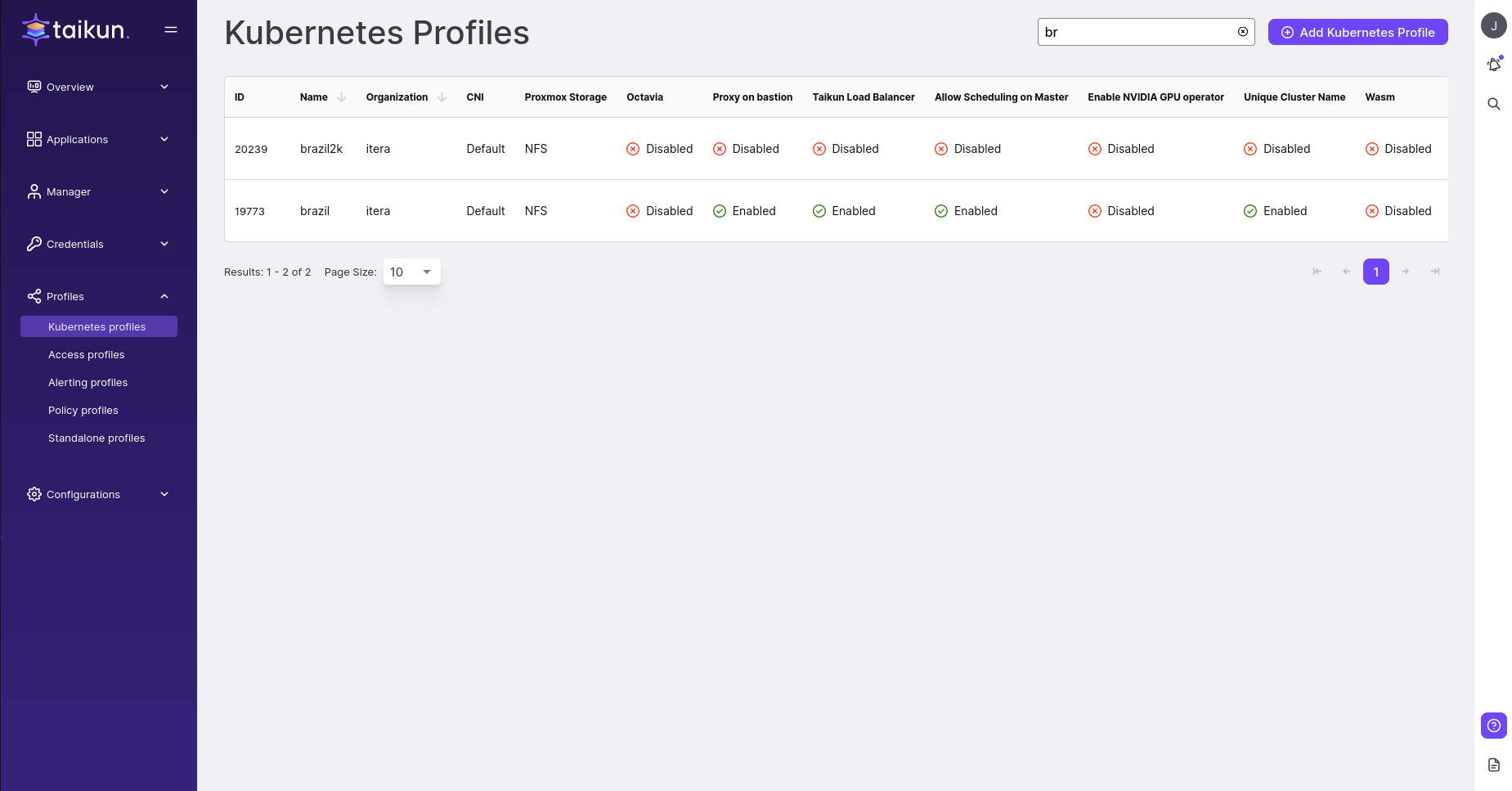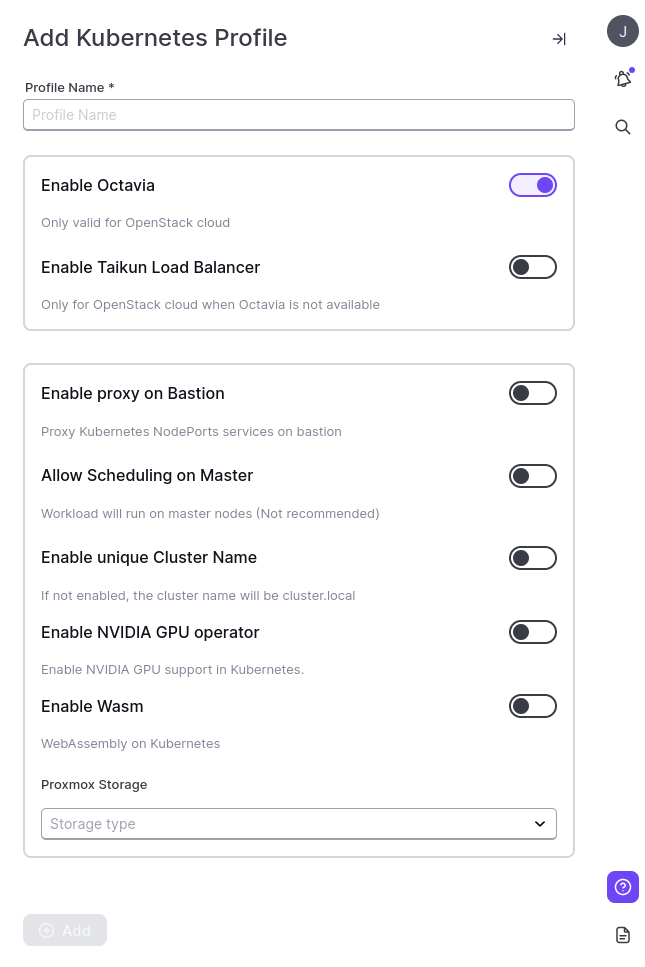Overview
Each Profile is characterized by ID, Name, Organization Name, CNI (Container Network Interface), Octavia, Proxy on Bastion, Projects, and Actions.


Expand the table to see the last modification (Last Modified and Last Modified By).
Add Kubernetes Profile
You can create a new profile where you can enable a few features, which you can customize with the CNI plugin.


Organization – choose an organization for your profile
Profile Name – the name for your Kubernetes profile (3-30 characters)
Octavia
Exposes the Service externally using the load balancers from OpenStack.
Enable Taikun Load Balancer
Manage your traffic, only available for OpenStack and Octavia disabled.
Proxy on bastion
Exposes the Service on each Node’s IP at a static port, the NodePort. You’ll be able to contact the NodePort Service, from outside the cluster, by requesting <NodeIP>:<NodePort.Info>
Choose this profile with enabled features during project creation.
Scheduling on Master
Schedule Pods on the control-plane node to maximize resource usage, but we do not recommend it.Note
If Allow Scheduling on Master is equal to false then the Kube worker should have more than 2 CPU
Enable Unique Cluster Name
If not enabled, the cluster name will be cluster.local
Enable NVIDIA GPU Operator
The NVIDIA GPU Operator streamlines the deployment and management of NVIDIA GPU resources within a Kubernetes cluster. It automates the installation of critical components, including NVIDIA drivers, the NVIDIA Container Toolkit, and device plugins, ensuring that GPUs are optimally configured and utilized for accelerated workloads. This operator is crucial for efficiently running GPU-intensive applications, such as machine learning, deep learning, and AI, within Kubernetes environments, providing seamless integration and performance enhancements.
Enable WebAssembly (Wasm)
WebAssembly (Wasm) enables high-performance execution of compiled code within Kubernetes, allowing workloads written in C, C++, and Rust to run efficiently and securely. By enabling Wasm in a Kubernetes profile, you can take advantage of its portable, sandboxed execution environment, which delivers near-native performance across diverse platforms. This feature is ideal for running complex, resource-intensive applications that require fast, secure, and cross-platform deployment within Kubernetes.
Proxmox Storage (optional)
In Taikun, “Proxmox storage” refers to storage managed and installed by Taikun, not the native Proxmox storage. It is integrated into your Kubernetes environment through Taikun for efficient storage management and is tailored specifically for your cloud infrastructure needs. Currently, there are three storage options available.
- NFS (Network File System): NFS is a file storage protocol that allows multiple servers to share storage over a network. In Taikun, NFS is installed as a Kubernetes storage solution, enabling persistent storage for your Kubernetes pods by allowing them to share files across nodes.
- OpenEBS: OpenEBS is a container-attached storage solution for Kubernetes. It provides dynamic storage provisioning, allowing you to create and manage storage volumes directly within your Kubernetes environment. Installed by Taikun, OpenEBS is designed for cloud-native applications that require granular control over storage resources.
- Longhorn: Longhorn is a lightweight, highly available distributed block storage system for Kubernetes. It provides easy-to-use persistent storage with features like snapshots, backups, and self-healing capabilities. Taikun installs Longhorn to offer reliable and scalable storage for your Kubernetes workloads.
Specify Container Network Interface (CNI)
To specify the Container Network Interface to be installed in your Kubernetes cluster, choose one of the options available under the CNI section.
At the moment, Calico CNI is is the default option. Cilium CNI will be added in the future releases.
Actions
![]()
![]()
![]()
![]()
![]()
![]()





